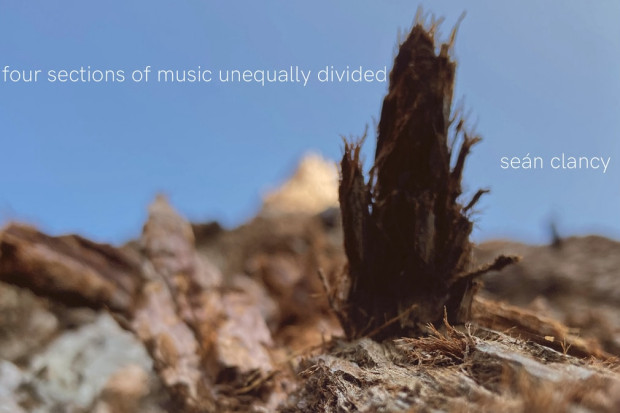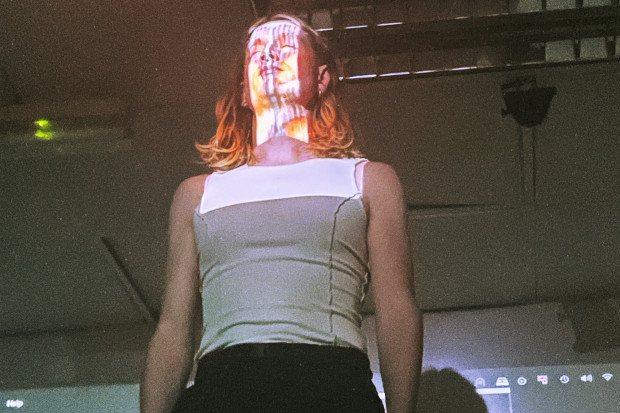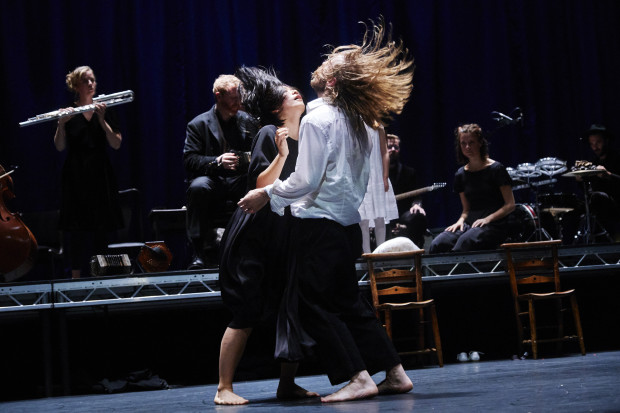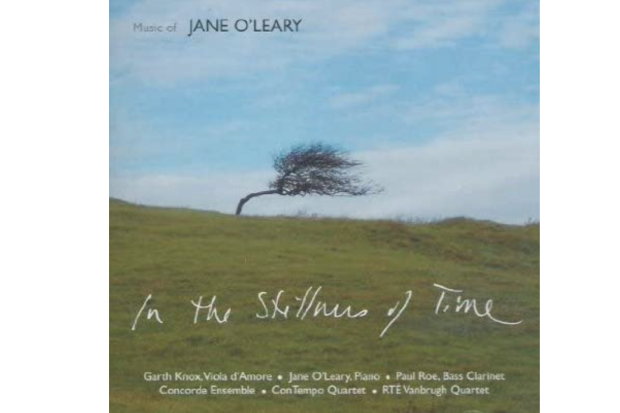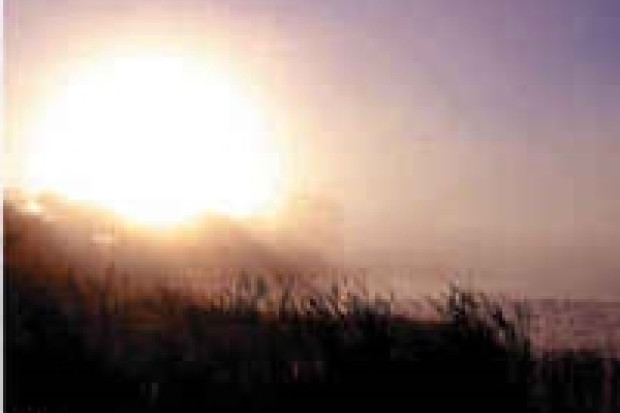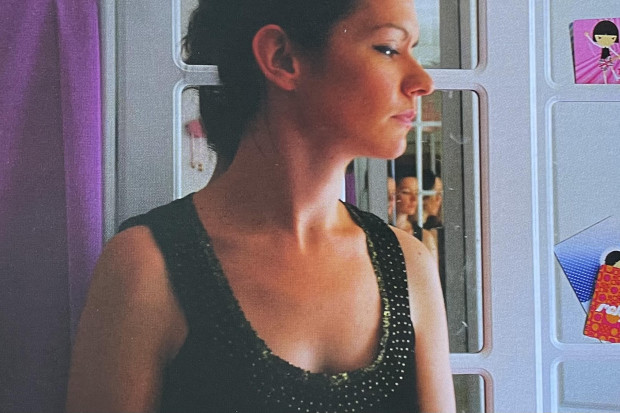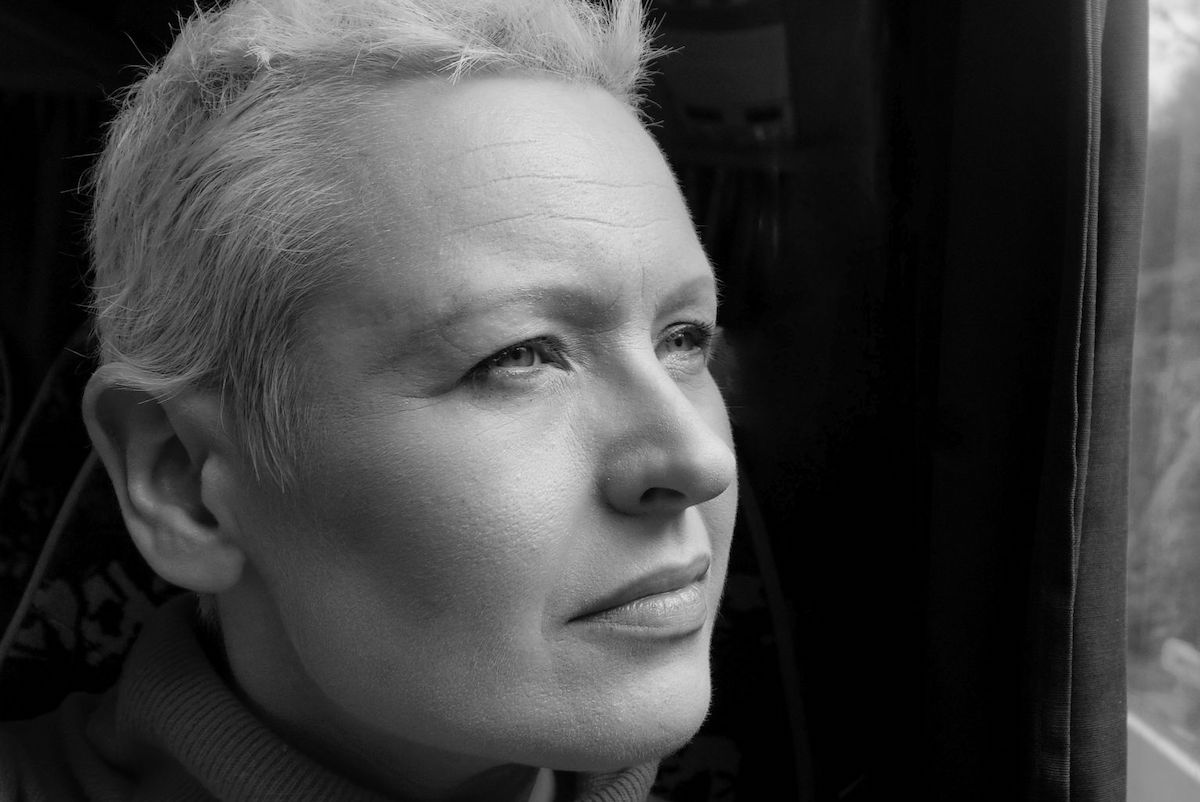
Ailís Ní Ríain (Photo: Emile Holba)
Duos Moving in Many Directions
Ailís Ní Ríain has been on the Irish music scene for some decades now (to say nothing of her international reputation), so it is well due that a CD of her work has been released. The Last Time I Died comprises a selection of her works from 2000 up to 2021.
Duos form the spine of the album, comprising five of the ten works featured on it, including its earliest composition, Don’t! (2000), performed by Pascal Archer on bass clarinet and Sofia Nowik on cello. It is interesting to compare this piece with Ní Ríain’s later works: they share Don’t!’s interest in how instruments can constantly come in and out of step with one another but are more subtle and detailed in their execution. (Although Don’t! is hardly juvenilia.) The next substantial duo is Consent #7 (2017), played by Sarah Watts (bass clarinet) and Carla Rees (bass flute). I found this the most reticent and involuted work on the album; even knowing, thanks to the liner notes, that it is an exploration of power dynamics, I could not connect the musical and extra-musical ideas in a satisfying way.
Parambassis (2019), performed by Laoise O’Brien (recorder) and Paul Roe (bass clarinet), makes a successful work out of what I would have thought an especially difficult combination of instruments to write for. Ní Ríain mostly lets the instruments’ disparate timbres sit apart, but there is yet a coherence to the piece in how the richer timbre of the bass clarinet ensconces the recorder’s thin tone. The title of the work is taken from a species of fish whose skeleton is visible through its flesh; I wonder if there is a direct correspondence here to the delicate, thin recorder and the ‘fleshier’ bass clarinet: instruments often have this stable representational correspondence in Ní Ríain’s duos.
The most recent duo, Hiding Out ’neath the Everything (2021), performed by Darragh Morgan on violin and Ní Ríain herself on pre-recorded prepared piano, has Morgan play an intricate and ever-shifting part with a lightly dancing lilt that sits sharply distinct from the much quieter spatial work of the piano, only occasionally meeting it for brief moments of shared pizzicato. It is a meandering work, full of direction that manages never to move, but enthralling in the vivacity of its moments.
Outlier
The Last Time I Died (2002), performed sensitively by Psappha, is already much more mature than 2000’s Don’t!. It is a bit of an outlier in the album: the musical language is more conservative and conventional, as when there are extended passages where one instrument is playing something like a melody and the other instrument(s) a supporting harmony. But this is no criticism of this intimate, frankly sad, and honest work, just a remark that this piece represents a musical path Ní Ríain did not pursue.
Between 2002 and 2017, Ní Ríain’s career is represented only by the two-minute ‘Thank You’ (2010), an excerpt from her large-scale multimedia work Brief-Blue-Electric-Bloom, performed by Tim Williams (cimbalom) and Tom McKinney (guitar). For reasons I give below, there is not much I can say about this.
Our First Lesson in Forgetting (2019), for solo classical guitar, might be my favourite work of the album. From the first chord, Ní Ríain’s musicality shines out in how she finds notes and progressions that sound just right. It is performed with great intelligence and pacing by Frederik Munk Larsen, who also brings an organic unity to Ní Ríain’s wide array of techniques and textures.
The album contains two short works sort of for solo piano: Soberado (2017) for toy piano and performed by Xenia Pestova Bennett, and Seahorse [long snouted] for prepared piano performed by Ní Ríain herself. The whimsy suggested by the toy piano of Soberado is soon undermined, first by the piece’s unsettling tonal and rhythmic idiom, and then more aggressively by its insistent second theme and the violent simultaneity of the two themes. Seahorse [long snouted] is more atmospheric and sounds to me like an attempt at simple representation absent elsewhere in the album: a foreground is created by the snort-like muted strings while unaltered bass notes, left to resonate, seem to represent the endless recession of the sea.
Voices in constant motion
The most substantial work of the album by far is Revelling/Reckoning (2021) for wind quintet and percussion, played with aplomb by the New London Chamber Orchestra, under conductor Darren Bloom, and Evelyn Glennie. It’s another excellent work. In the first movement, ‘Revelling’, the voices are in constant motion, as free in their movement when moving polyphonically as when homophonically – and they flit between modes of interplay, between dialogue and chorus, as lightly and breezily as bees. As with Hiding Out ’neath the Everything, the other 2021 work on this album, the lines can have a very fine grain, but always with a clear audible logic. The percussion, which relies heavily on struck toms and cymbals, blends well with the softer attack of the wind instruments, but not too smoothly. This revelry has something martial and clangourous about it; the menacing image that came to me was of sailors on shore leave.
The longer second movement, ‘Reckoning’, is, I suppose, the morning after. Slow, with Glennie mostly on bowed percussion, and full of plaintive, exposed harmonies, the music struggles to rise – and indeed ends by tailing off. In this, there’s almost a winking wit to the music. But it still manages to be replete with interesting writing and more importantly to be beautiful.

Ailís Ní Ríain, Evelyn Glennie and the New London Chamber Ensemble recording Revelling/Reckoning at Stapleford Granary in Stapleford, England (Photo: NMC)
Context for the works
For all that I have said about Ní Ríain’s music itself, the packaging of it leaves a lot to be desired. To this release’s credit, David Lefeber’s mastering gives a convincing evenness to these recordings that span over a decade as well as spaces as diverse as churches and recording studios. But the release misses an easy opportunity to provide context for the works and Ní Ríain’s compositional interests. Instead, we get just an assortment. We are not even told the dates of composition of the works, or why these works in particular have been selected. (Why are duets so overrepresented?) The small booklet does contain a short and illuminating essay by Benjamin Dwyer, but nothing at all by Ní Ríain, despite the fact that she is a writer as well as a composer, and despite the fact, according to Dwyer, that her music is ‘drawn outwards towards extra-musical themes and disciplines: literature, film, photography, objets trouvés.’ I would have liked to hear about these connections, especially given the importance Dwyer gives them. I would also like to have heard how the brief ‘Thank You’ fits into Ní Ríain’s 2010 large-scale multimedia project Brief-Blue-Electric-Bloom from which it is excerpted: all we get is Dwyer’s tantalisingly brief mention that the overall work ‘dissolves the hard borders between sign, signal (notation) and sound’, which in turn has something to do with the fact that Ní Ríain is hearing impaired. This track is only two minutes long: without context, I can admire the single developing sound that constitutes it, but I can’t think or feel anything much about the movement’s significance within its containing work – which is to say that I can’t think or feel much about the meaning of this short movement itself. To be sure, the Debut Discs series from NMC may be supposed to whet appetites rather than sate them – but this CD runs the risk of not allowing the listener to even get their teeth in. This is a shame, because Ní Ríain’s music well rewards delectation.
The Last Time I Died by Ailís Ní Riain is released on NMC. Visit https://nmc-recordings.myshopify.com/products/ailis-ni-riain-the-last-time-i-died
Published on 17 August 2023
James Camien McGuiggan studied music in Maynooth University and has a PhD in the philosophy of art from the University of Southampton. He is currently an independent scholar.










